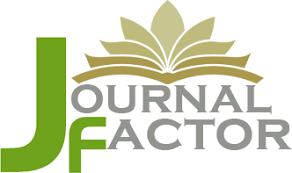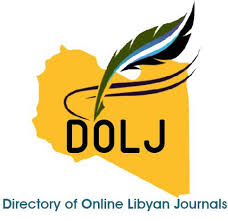Effect of Different Degrees of lingual Implant Inclination on the Retention of Locator Retained Mandibular Implant Overdenture. An In-Vitro Study
DOI:
https://doi.org/10.54361/Ljmr18-1.20Keywords:
Overdenture, Locator attachment, retention testAbstract
Purpose: This study was condacted to evaluate and compare different degrees of lingual implant inclination on retention of locator attachments used for two implant retained mandibular overdentures .Materials and Methods: Four acrylic resin models representing acompletely edentulous mandibular ridges were used. Each model received two implants inserted at canine area bilaterally with different degree of lingual inclination. Group I (control Group) 00, Group II (100), Group III (200), and Group IV (300). The residual ridge and the retromlar regions for each acrylic resin model were covered by auto-polymerized silicon material to simulate the oral mucosa. Four experimental acrylic metal reinforced overdenture were fabricated and connected to the implants using Locator attachments, Universal Testing Machine was used for measuring initial and final retentive force, The Results: Locator transparent, 00 inclination and anterior dislodging recorded the highest retentive forces, while Locator blue 100 inclination and vertical dislodging recorded the lowest retention values. Conclusions: For majority of groups, inserts, dislodging forces, initial retention recorded significant higher values than final retention.
Downloads
References
-La K, White GS, Morea DN, Wright RF. Use of stereolithographic templates for surgical and prosthodontic implant planning and placement. Part II. A clinical report. J Prosthodont. 2020;15(2):117-122.
- Kuoppala R, Näpänkangas R, Raustia A. Outcome of implant-supported overdenture treatment - a survey of 58 patients. Gerodontology. 2019;29(2):577-84.
- Davarpanah M, Szmukler-Moncler S. Immediate loading of dental implants: theory and clinical practice: Quintessence International; 2018.
Kuoppala R, Näpänkangas R, Raustia A. Outcome of
implant-supported overdenture treatment - a survey of 58
patients. Gerodontology. 2012;29(2):577-84.
Kuoppala R, Näpänkangas R, Raustia A. Outcome of
implant-supported overdenture treatment - a survey of 58
patients. Gerodontology. 2012;29(2):577-84.
Kuoppala R, Näpänkangas R, Raustia A. Outcome of
implant-supported overdenture treatment - a survey of 58
patients. Gerodontology. 2012;29(2):577-84.
- Szmukler-Moncler S, Salama H, Reingewirtz Y, Dubruille JH. Timing of loading and effect of micromotion on bone-dental implant interface: review of experimental literature. J Biomed Mater Res. 2020;43(2):192-203.
Tallgren A. The continuing reduction of the residual alveolar ridges in complete denture wearers: a mixed-longitudinal study covering 25 years. J Prosthet Dent. 1972;27(2):120-132.
Atwood DA, Coy WA. Clinical, cephalometric, and densitometric study of reduction of residual ridges. J Prosthet Dent. 1971;26(3):280-295.
Krennmair G, Furhauser R, Krainhofner M, Weinlander M, Piehslinger E. Clinical outcome and prosthodontic compensation of tilted interforaminal implants for mandibular overdentures. Int J Oral Maxillofac Implants. 2005;20(6):923-929.
Davis DM, Rogers JO, Packer ME. The extent of maintenance required by implant-retained mandibular overdentures: a 3-year report. Int J Oral Maxillofac Implants. 2019;11(6):767-774.
Yang TC, Maeda Y, Gonda T, Kotecha S. Attachment systems for implant overdenture: influence of implant inclination on retentive and lateral forces. Clin Oral Implants Res. 2011;22:1315-9.
Celik G, Uludag B. Photoelastic stress analysis of various retention mechanisms on 3-implant-retained mandibular overdentures. J Prosthet Dent. 2007;97:229-35.
Gulizio MP, Agar JR, Kelly JR, Taylor TD. Effect of implant angulation upon retention of overdenture attachments. J Prosthodont. 201714:3-11.
ELsyad MA, Setta FA, Khirallah AS. Strains around distally inclined implants retaining mandibular overdentures with Locator attachments. An in vitro study
The journal of advanced prosthodontics. 2016;8 116-24.
Elsyad MA, Eltowery SM, Gebreel AA. Peri-implant strain around mesially inclined two implants retaining mandibular overdentures with Locator attachments. . Journal of oral science.(in press).
Stephens GJ, di Vitale N, O'Sullivan E, McDonald A. The influence of interimplant divergence on the retention characteristics of locator attachments, a laboratory study. J Prosthodont. 2014;23:467-75.
Elsyad MA, Hatem OE, Shawky AF, Emera RM. Effect of different degrees of mesial implant inclination on the retention and stability of two-implant mandibular overdentures retained with stud attachments. An invitro study. Int J Oral & Maxillofac Implants. 2017;(in press).
Tokuhisa M, Matsushita Y, Koyano K. In vitro study of a mandibular implant overdenture retained with ball, magnet, or bar attachments: comparison of load transfer and denture stability. Int J Prosthodont. 2003;16:128-34. Petropoulos VC, Smith W. Maximum dislodging forces of implant overdenture stud attachments. Int J Oral Maxillofac Implants. 2022;17:526-35.
Sadig W. A comparative in vitro study on the retention and stability of implant-supported overdentures. Quintessence Int. 2019;40:313-9.
Petropoulos VC, Mante FK. Comparison of retention and strain energies of stud attachments for implant overdentures. J Prosthodont. 2011;20:286-93.
Rabbani S, Juszczyk AS, Clark RK, Radford DR. Investigation of retentive force reduction and wear of the locator attachment system with different implant angulations. Int J Oral Maxillofac Implants. 2015;30:556-63.
-Rutkunas V, Mizutani H, Takahashi H. Influence of attachment wear on retention of mandibular overdenture. J Oral Rehabil. 2007;34:41-51.
Turk PE, Geckili O, Turk Y, Gunay V, Bilgin T. In vitro comparison of the retentive properties of ball and locator attachments for implant overdentures. Int J Oral Maxillofac Implants. 2014;29:1106-13.
Chung KH, Chung CY, Cagna DR, Cronin RJ, Jr. Retention characteristics of attachment systems for implant overdentures. J Prosthodont. 2004;13:221-6.
Ortegon S, Thompson G, Agar J, Taylor T, Perdikis D. Retention forces of spherical attachments as a function of implant and matrix angulation in mandibular overdentures: an in vitro study. J Prosthet Dent. 2009;101:231-8.
Fromentin O, Picard B, Tavernier B. In vitro study of the retention and mechanical fatigue behavior of four implant overdenture stud-type attachments. Practical periodontics and aesthetic dentistry : PPAD. 1999;11:391-7;
Rutkunas V, Mizutani H, Takahashi H, Iwasaki N. Wear simulation effects on overdenture stud attachments. Dental materials journal. 2017;30:845-53.
Published
Issue
Section
License
Copyright (c) 2024 Ruba Mohamed Ali Shuayb, Mohamed Elhadi Abokrais (Author)

This work is licensed under a Creative Commons Attribution-NonCommercial-NoDerivatives 4.0 International License.
Open Access Policy
Libyan journal of medical Research (LJMR).is an open journal, therefore there are no fees required for downloading any publication from the journal website by authors, readers, and institution.
The journal applies the license of CC BY (a Creative Commons Attribution 4.0 International license). This license allows authors to keep ownership f the copyright of their papers. But this license permits any user to download , print out, extract, reuse, archive, and distribute the article, so long as appropriate credit is given to the authors and the source of the work.
The license ensures that the article will be available as widely as possible and that the article can be included in any scientific archive.
Editorial Policy
The publication of an article in a peer reviewed journal is an essential model for Libyan journal of medical Research (LJMR). It is necessary to agree upon standards of expected ethical behavior for all parties involved in the act of publishing: the author, the journal editorial, the peer reviewer and the publisher.
Any manuscript or substantial parts of it, submitted to the journal must not be under consideration by any other journal. In general, the manuscript should not have already been published in any journal or other citable form, although it may have been deposited on a preprint server. Authors are required to ensure that no material submitted as part of a manuscript infringes existing copyrights, or the rights of a third party.
Authorship Policy
The manuscript authorship should be limited to those who have made a significant contribution and intellectual input to the research submitted to the journal, including design, performance, interpretation of the reported study, and writing the manuscript. All those who have made significant contributions should be listed as co-authors.
Others who have participated in certain substantive aspects of the manuscript but without intellectual input should only be recognized in the acknowledgements section of the manuscript. Also, one of the authors should be selected as the corresponding author to communicate with the journal and approve the final version of the manuscript for publication in the LJMR.
Peer-review Policy
- All the manuscripts submitted to LJMR will be subjected to the double-blinded peer-review process;
- The manuscript will be reviewed by two suitable experts in the respective subject area.
- Reports of all the reviewers will be considered while deciding on acceptance/revision or rejection of a manuscript.
- Editor-In-Chief will make the final decision, based on the reviewer’s comments.
- Editor-In-Chief can ask one or more advisory board members for their suggestions upon a manuscript, before making the final decision.
- Associate editor and review editors provide administrative support to maintain the integrity of the peer-review process.
- In case, authors challenge the editor’s negative decision with suitable arguments, the manuscript can be sent to one more reviewer and the final decision will be made based upon his recommendations.













